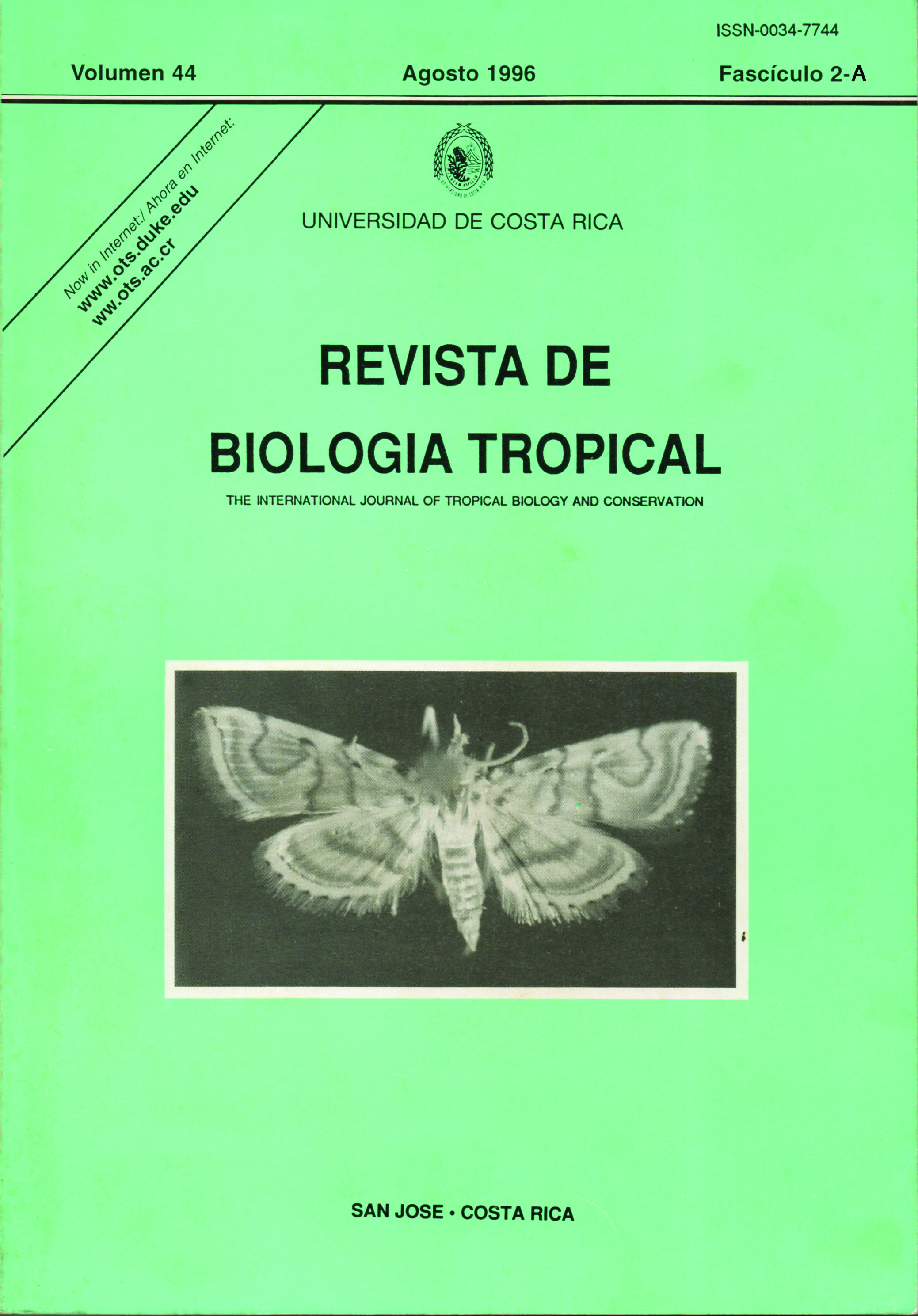Abstract
Pejibaye (Bactris gasipaes) seeds were genninated in trays covered with transparent pIastic. Vermiculite or composted shredded pine Ieaves were used as substrate. The trays were kept in a glasshouse under natural light (treatment GL) or 60% shade (treatment GS), or in an open-side pIastic greenhouse under natural light (treatment PL). The total emergence percentage and the emergence rate were significantIy higher for treatment GS, 45.5% and 8.62 x 10-3 day-1 respectively, than for GL (17.5% and 5.41 x 10-3 day-l) and PL (16.5% and 5.21 x 10-3 day-l). There was no difference between substrates. Higher emergence percentage in treatment GS was caused by more adequate substrate temperature (l6.5°C to 31.9°C). In trealment GL the substrate temperature varied between 17.rC and 38.5°C, achieving the highest average (28°C) and the Iargest thermal amplitude (20.8°C). Temperature of treatment PL varied between 12.6°C and 27.6°C, with the lowest average (20.l°C). Visual observation suggested that shade may favours the initial development of seedlings. Substrate temperature might be regarded as a better indicative of environmentaI conditions for gennination than the air temperature. Shade inside the glasshouse protected gennination substrate from extreme temperatures.##plugins.facebook.comentarios##

This work is licensed under a Creative Commons Attribution 4.0 International License.
Copyright (c) 1996 Revista de Biología Tropical


